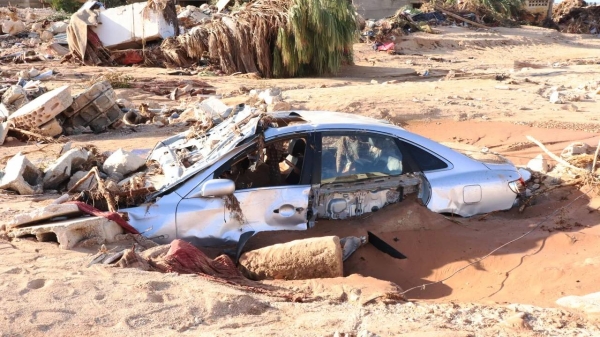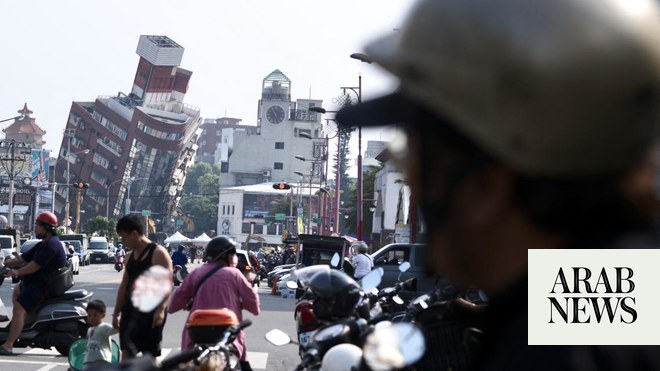
Twenty six bodies have been recovered in the Indian Himalayas and scores more people are still missing after a second day of rescue efforts after a glacier break that caused an avalanche of water and debris to engulf a river valley and demolish two dams.
A surge of water, thought to be triggered when a glacier broke off from Nanda Devi mountain in the state of Uttarakhand, left a trail of devastation when it hit on Sunday morning.
Authorities have said 171 people are still missing.
The force of the fast-moving flood waters obliterated two hydropower dams located along the Rishiganga and Dhauliganga rivers, where hundreds of personnel had been working. Several bridges, roads, homes and hundreds of grazing sheep, cattle and goats were also swept away in the deluge and two other hydropower projects were damaged.
Hundreds of troops, paramilitary and rescue operatives were brought to Chamoli district to recover bodies from the muddy aftermath. Much of Monday’s rescue operation focused on a 1.5-mile (2.4km) tunnel beneath the Tapovan Vishnugad hydropower dam, which suffered severe damage in the flash flood.
About 39 workers were believed to be trapped inside the 3-metre-high tunnel, which had become blocked with mud and rocks when the floods hit. Heavy machinery was brought in to try to dig out the entrance of the tunnel, working alongside rescuers digging manually with shovels. But as darkness fell, they had still not had any contact with those trapped in the runnel.
Vivek Pandey, spokesperson for the Indo-Tibetan border police, who are overseeing the rescue operation, said: “About 100 metres inside the tunnel is cleared and accessible, and it looks like about 100 metres of debris more will have to be cleared. This will take a few more hours.”
Earlier, 12 workers were rescued from a smaller tunnel beneath the Tapovan-Vishnugad dam. Lal Bahadur, one of the dam workers who was left trapped in the tunnel for almost eight hours, described the scenes when the flood water hit: “We heard people screaming at us to come out of the tunnel but before we could react, a sudden gush of water and heavy silt swamped upon us,” he said.
At least nine villages in the impacted Chamoli valley were cut off after several bridges were destroyed and supplies had to be dropped from the air.
Scientists and researchers were also airlifted to the site to determine the exact cause of the flash flood. LK Sinha of the Defence Research and Development Organisation told Indian media his team had done an aerial survey of the mountain area where the incident took place.
He said: “Prima facie it looks that a hanging glacier broke away from the main glacier and came down in the narrow valley. In the valley it formed a lake which burst later and caused the damage.”
Scientists said it was highly unusual for a glacier to break off during the winter months. But experts had previously said glacial melting because of global heating was expected to become a huge problem for the region in the next few years. A survey from 2019 found that glaciers in the Himalayas have been melting at double the speed since 2000, losing nearly a vertical 50cm of ice each year.
Dr AP Dimri, a professor at the School of Environmental Science at Jawaharlal Nehru University, said: “The Himalayas are a water tower. With increasing global warming, the upper reaches of the Himalayas are warming faster, leading to more rapid melting of the glaciers.”
On Monday, RK Singh, the minister for power and renewable energy, said a remote warning system would be set up to monitor glaciers in the region.
Activists and locals said the incident also demonstrated the risk being taken when building huge dam projects in the increasingly ecologically fragile Himalayan region. The state government is involved in a mammoth development push along Uttarakhand’s rivers to met the growing demand for hydropower in India, and there are more than 500 hydropower projects in the state.
Uma Bharti, India’s former water resources minister and a senior member of the ruling Bharatiya Janata party, was among those who said they had warned against the building of dams in this area.
Manju Menon, senior fellow at the Centre for Policy Research, said: “One of the most unfortunate outcomes of the climate policy discourses globally has been a reacceptance of large dams by governments as a viable non-fossil fuel source of energy.”
She added.“This reacceptance is ironic because climate change has also made hydrological flows in the Himalayas erratic and unpredictable, in terms of the impacts on glaciers and monsoon patterns. Therefore, planning and implementing large engineering projects on himalayan rivers is fraught with great risks. Most scholars of Himalayan rivers have been warning about these risks for decades.”











